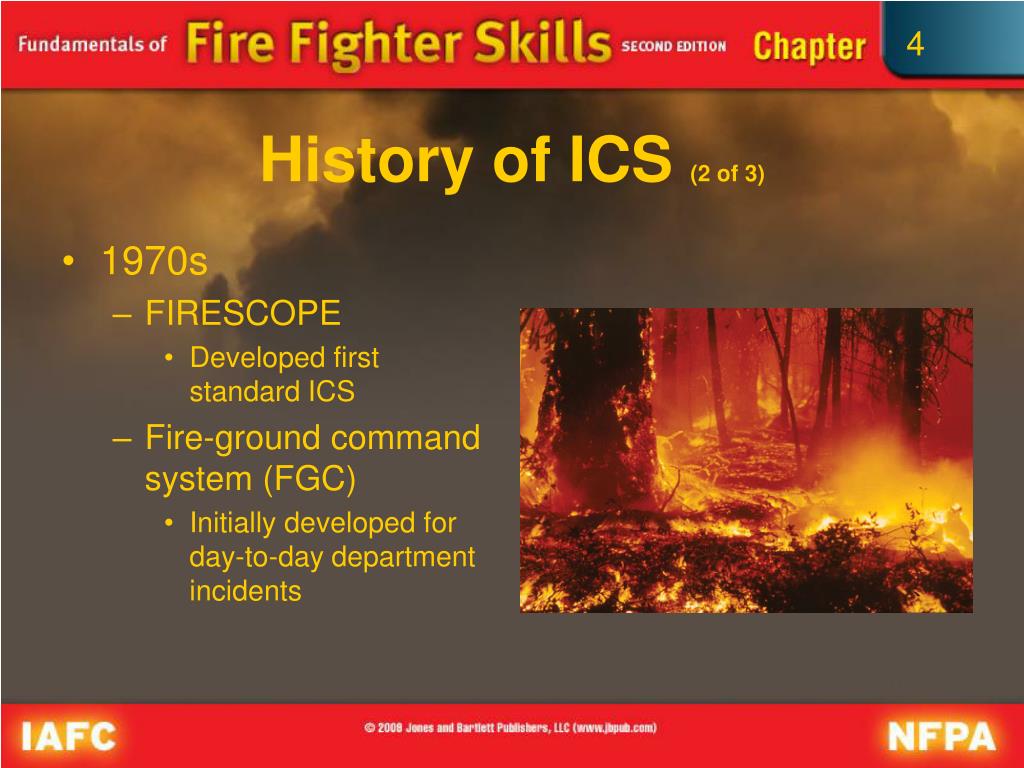
Dispatch/deployment - any resources needed on an incident can only deploy if they are requested.


Accountability means that every person at an incident has responsibility, has to follow specific guidelines, follow the check-in/check-out rule, and be part of the resource tracking.Unity of command means that each personnel only reports to one supervisor. Chain of command and unity of command - chain of command is the linear format from supervisor to subordinate.Unified command allows the leaders from multiple agencies to work together as incident command.When command is being transferred, the new incident commander is briefed on the incident action plan and the status of the incident. Establishment and transfer of command - at the beginning of any incident, the incident commander should establish the command function, and designate where the command post is located.
HISTORY OF THE INCIDENT COMMAND SYSTEM SOFTWARE
Integrated communications can involve using communication software such as video conferencing, and common radio frequencies. Integrated communications are important since there are multiple different agencies and government levels working together.Comprehensive resource management involves keeping an accurate inventory of all resources available. Comprehensive resource management - resources are anything that can help in an incident, including personnel, equipment, supplies, etc.Incident facilities and locations - depending on the incident, the incident commander may designate areas for facilities such as triage areas, emergency shelters, and incident command posts (ICPs).The rule of thumb for span of control is one supervisor to five-seven subordinates. Manageable span of control allows supervisors to efficiently lead their subordinates on an incident.Incident action planning - incident action plans help guide incident activities.Management by objectives - this involves creating specific objectives that can be measured to insure that they are being met.Modular organization - the organizational structure is modular, and can be changed as needed to fit the incident's needs.Common terminology - communications involve common vocabulary and plain English (i.e.NIMS runs on 14 principles of management to help incident management run smoother. Mutual aid is when there is a document and/or agreement between jurisdictions to help each other by sending needed resources. Resource management during an incident involves keeping track of resources, requesting resources, and demobilizing resources. This process also involves finding out what the resources are most useful for. Identifying and Typing resources include finding the resources and making sure they are qualified and capable for the job. Identifying the resources can help the IC know that they exist and are ready to deploy for use. Identifying and managing resources allows the incident commander to get the correct resources as needed. After 9/11, there was a need for more coordination and clearer communication among agencies, so the DHS started to expand upon FIRESCOPE and NIIMS and created the first NIMS document releasing it in 2004. Many communities adopted the NIIMS, but not everyone did. in 1982, the authors of FIRESCOPE and the NWCG created the National Interagency Incident Management System to help make different operational system guidelines applicable to any incident and/or hazard. Incident Command System and Multiagency Coordination Systems are both part of FIRESCOPE. In the 1970s, different agencies at the local, state, and Federal levels got together and created FIRESCOPE, which is the precursor to NIMS. NIMS is the result of 40 years of work to improve interoperability in management of an incident.




 0 kommentar(er)
0 kommentar(er)
